
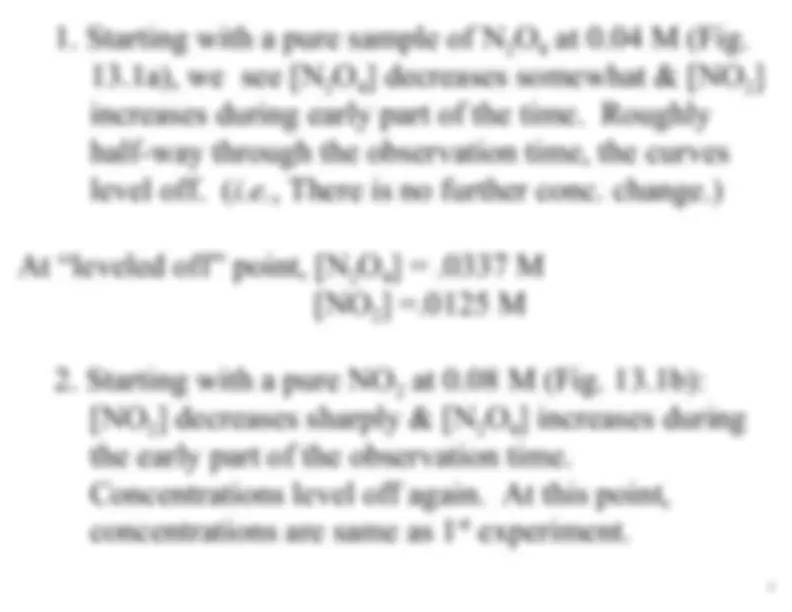
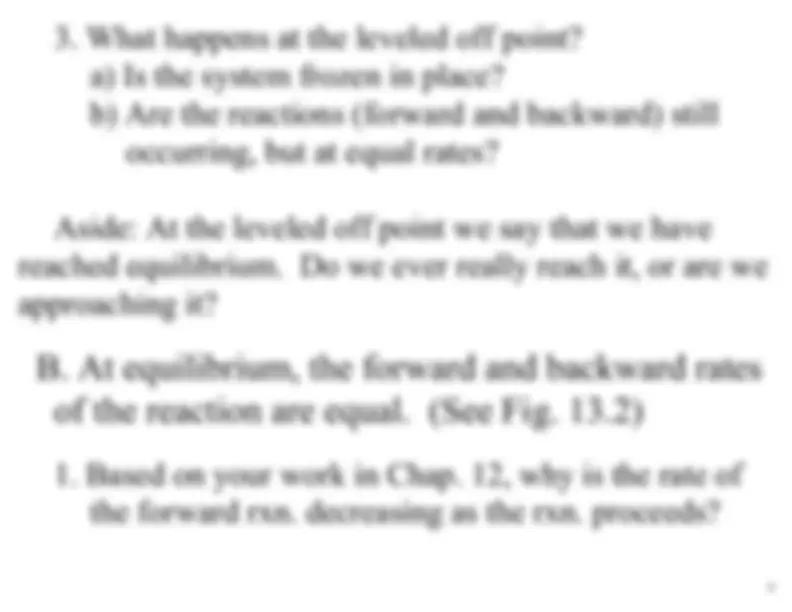
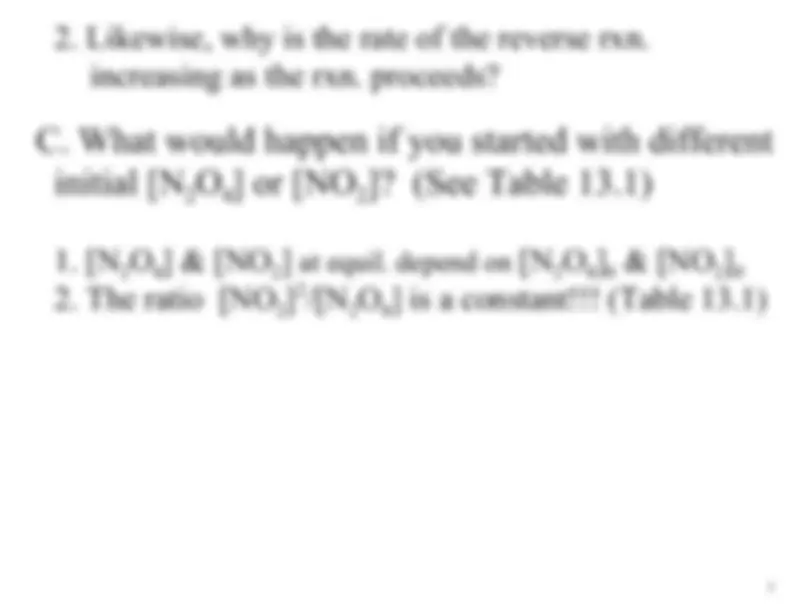
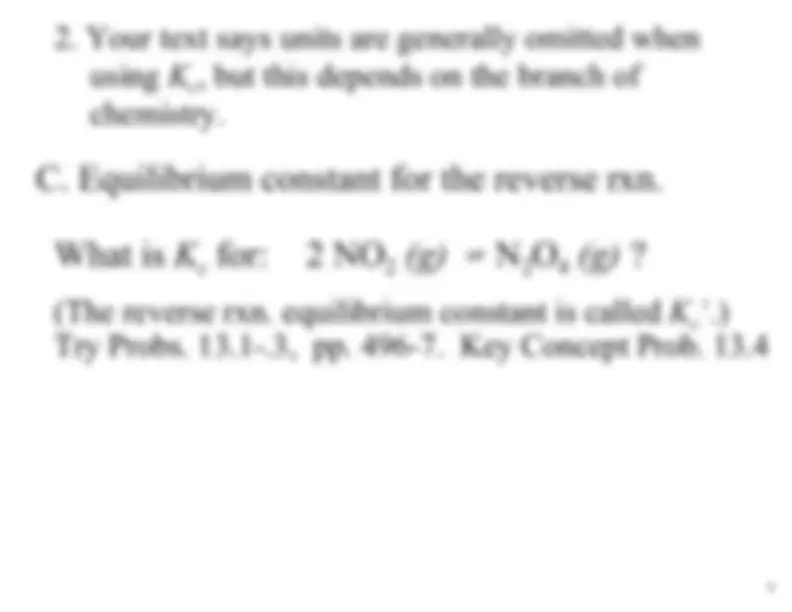
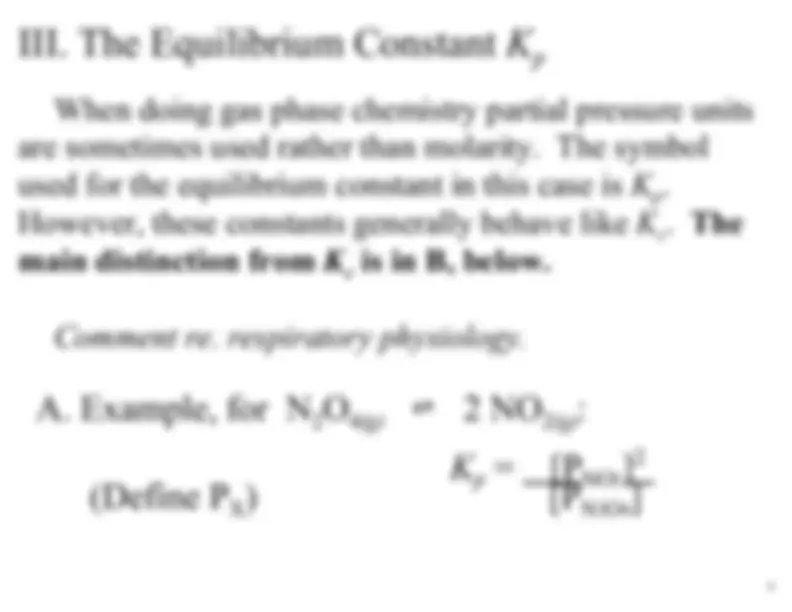
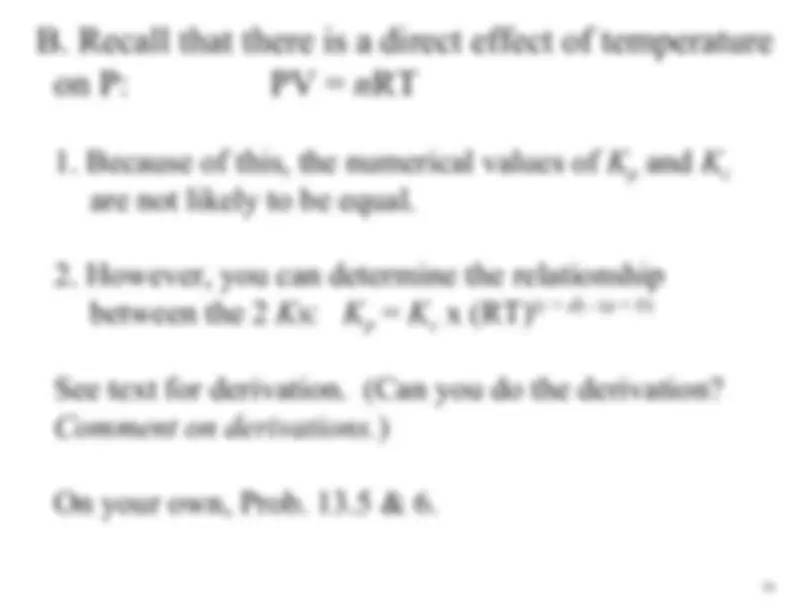
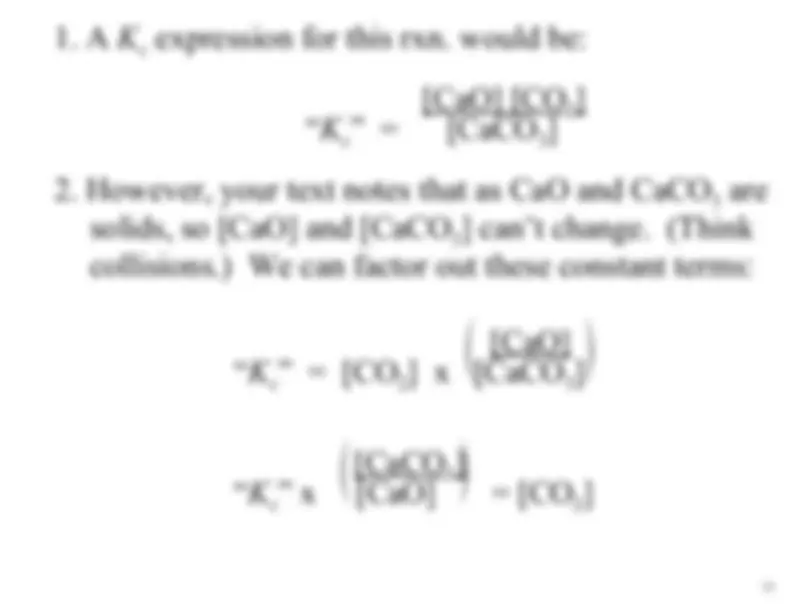
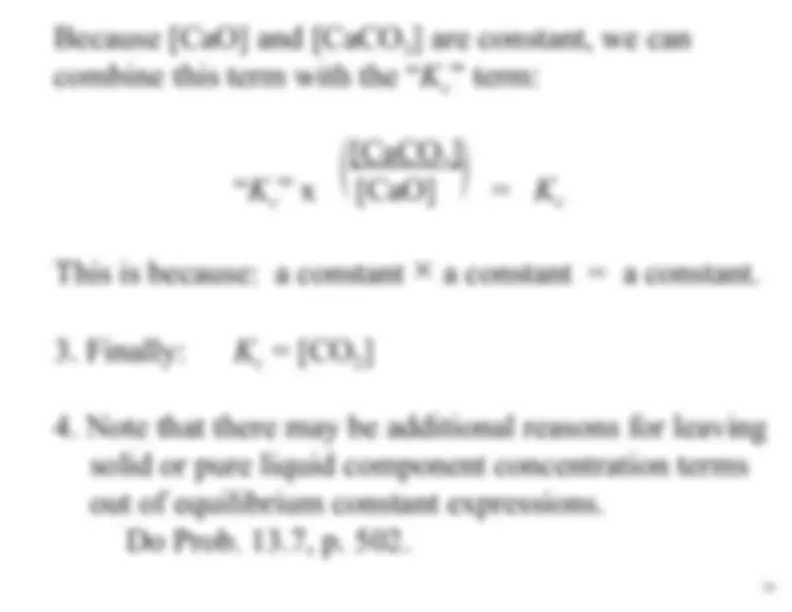
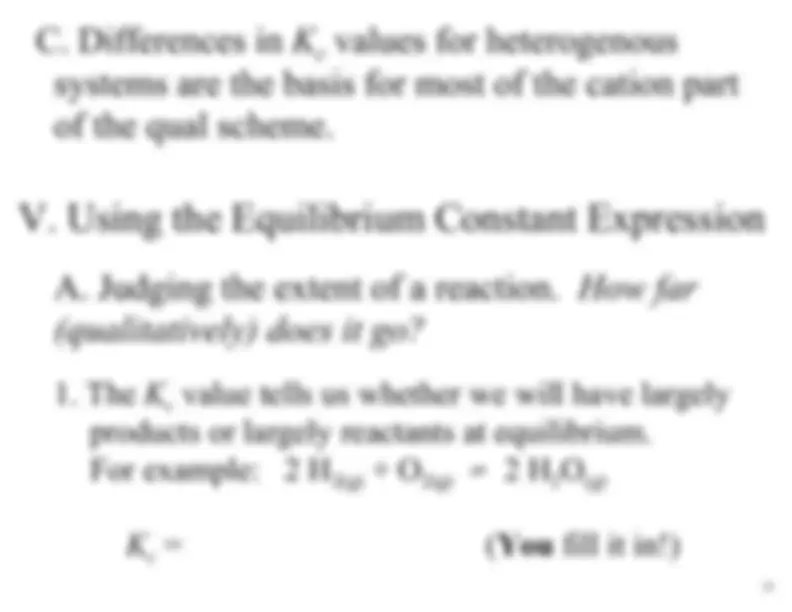
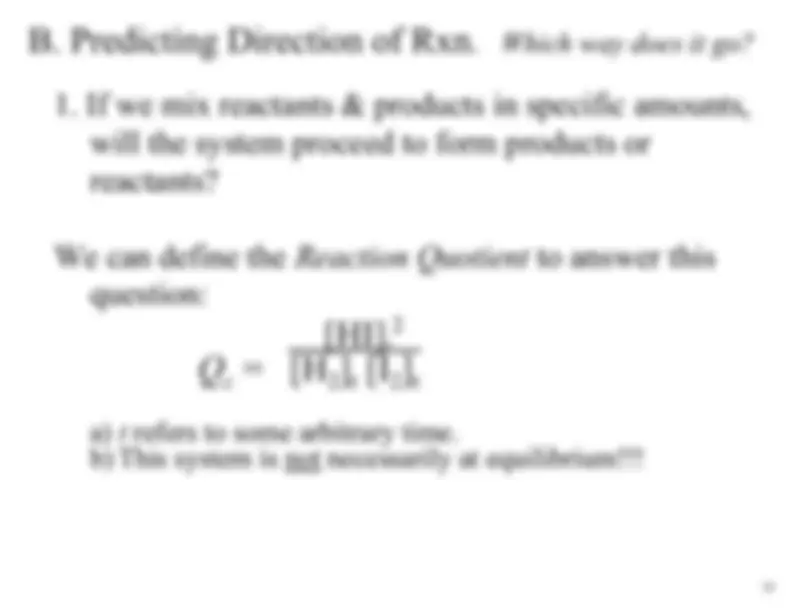
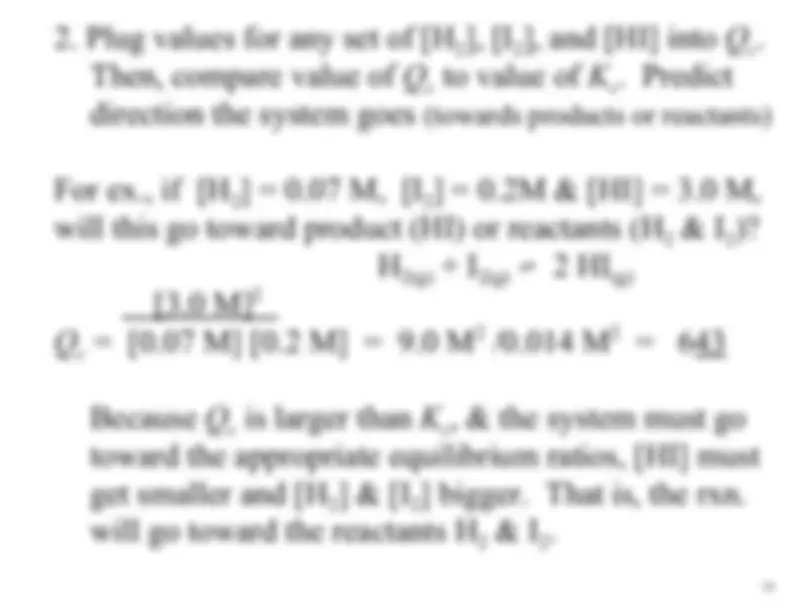
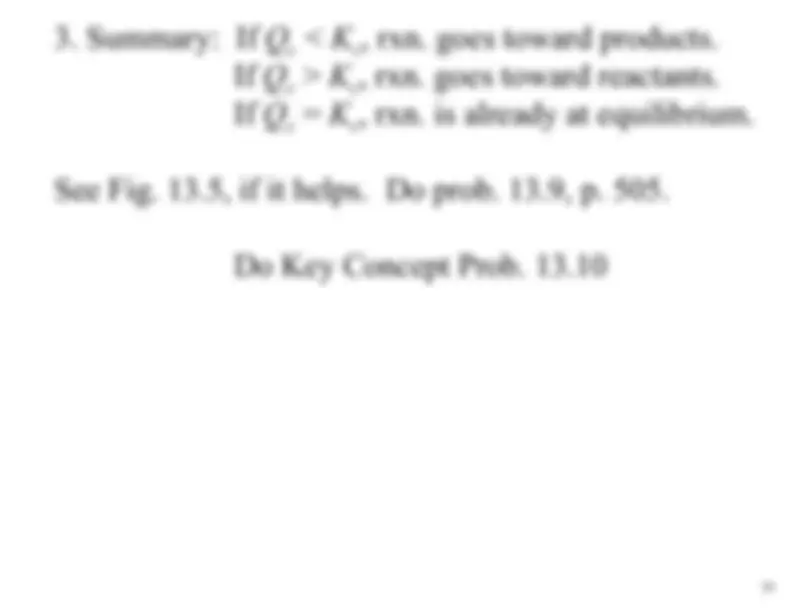
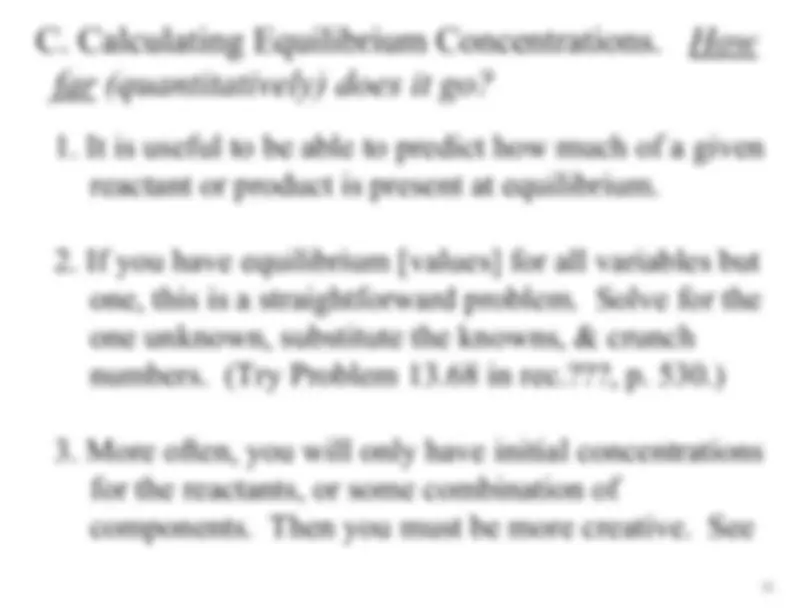
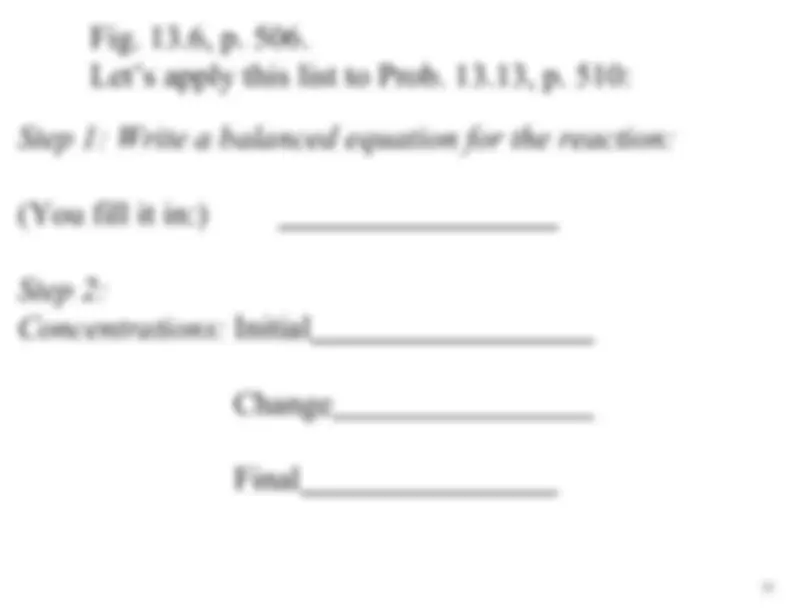
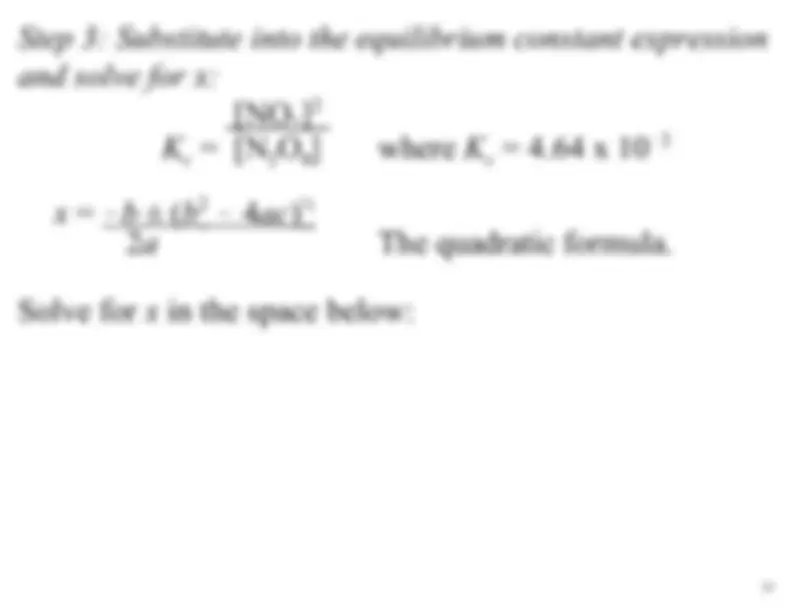
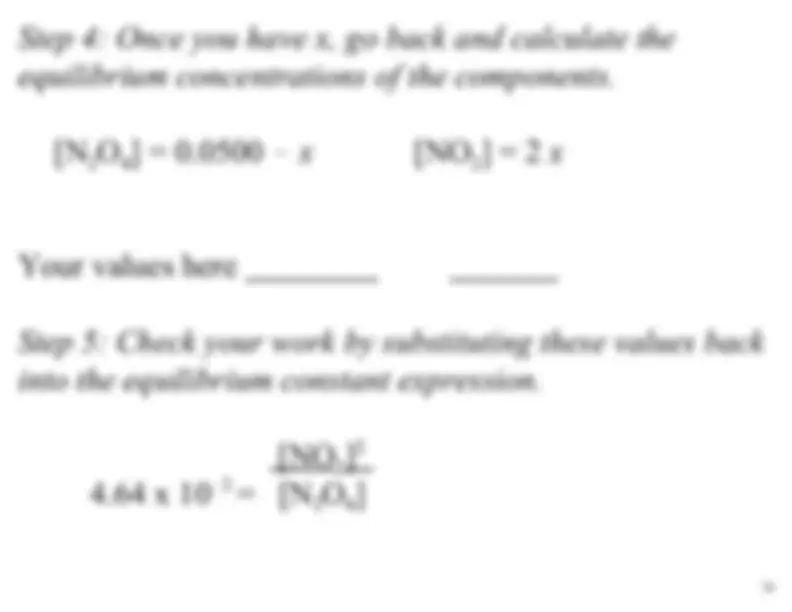
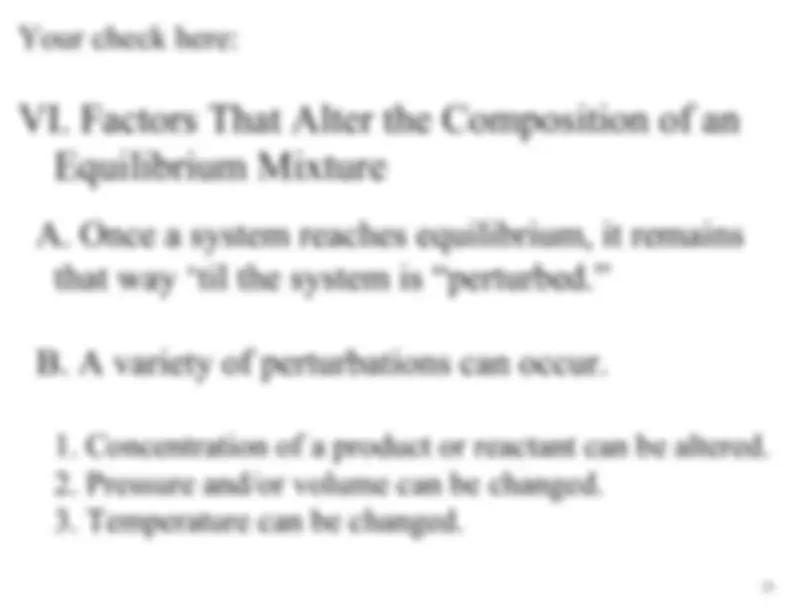
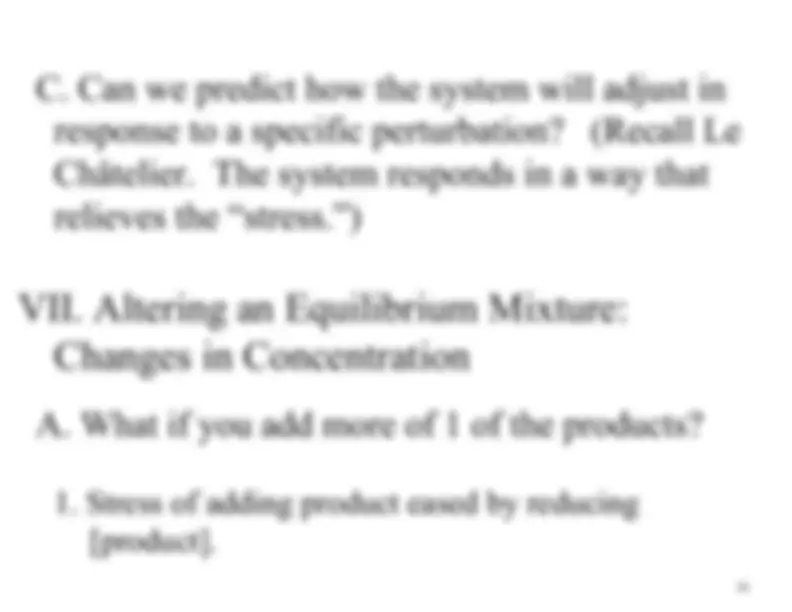
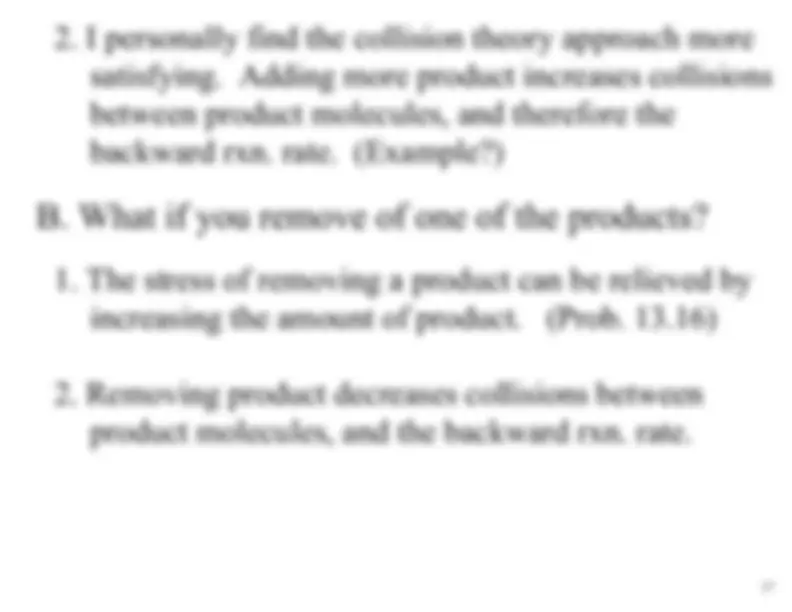
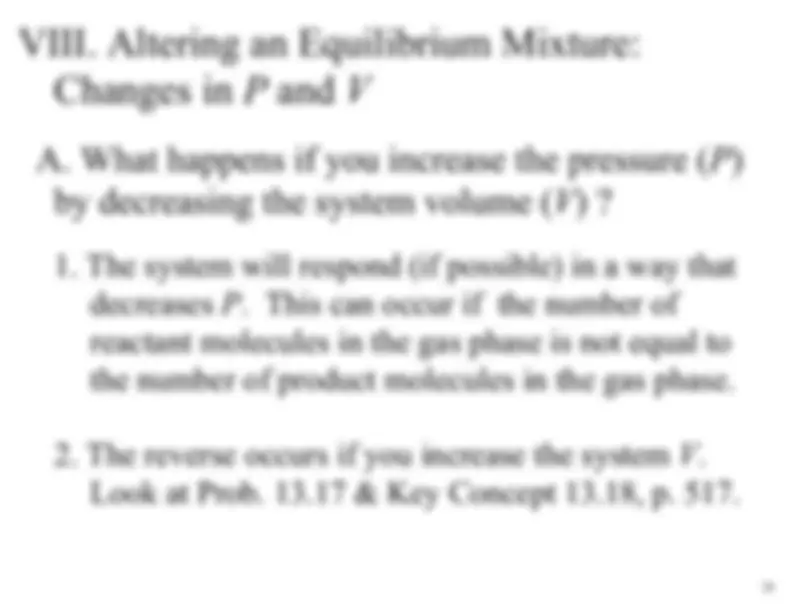


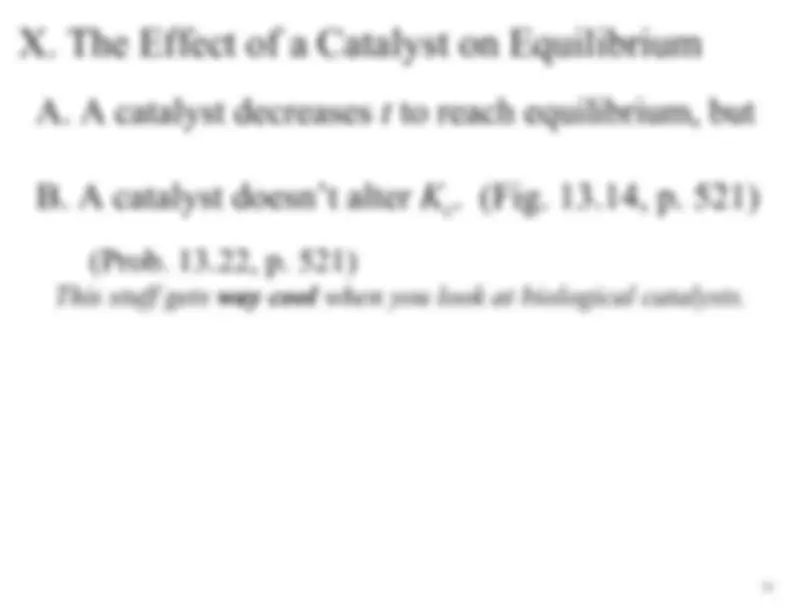
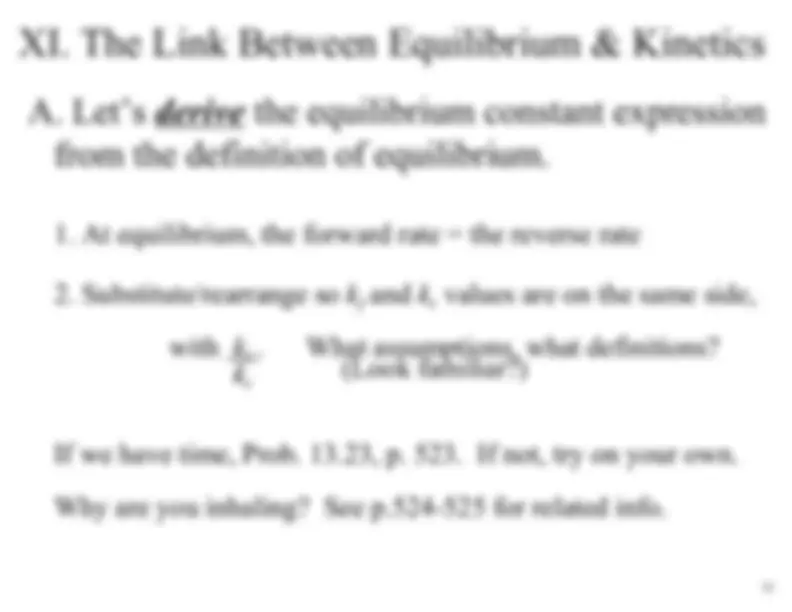


Study with the several resources on Docsity

Earn points by helping other students or get them with a premium plan


Prepare for your exams
Study with the several resources on Docsity

Earn points to download
Earn points by helping other students or get them with a premium plan
Community
Ask the community for help and clear up your study doubts
Discover the best universities in your country according to Docsity users
Free resources
Download our free guides on studying techniques, anxiety management strategies, and thesis advice from Docsity tutors
The concept of chemical equilibrium, focusing on how altering conditions can shift equilibrium concentrations in a reaction. It covers the equilibrium state, the role of the equilibrium constant k, and how temperature, pressure, and catalysts impact equilibrium mixtures. It also discusses the link between equilibrium and kinetics.
Typology: Slides
1 / 32

This page cannot be seen from the preview
Don't miss anything!

























I. The Equilibrium State
N O 2 4 (g) W 2 NO 2 (g) colorless reddish-brown Aside on terms:
We can study this reaction by introducing a pure sample of either N O or NO into a reaction vessel. 2 4 2
Aside: At the leveled off point we say that we have reached equilibrium. Do we ever really reach it, or are we approaching it?
[NO ] 2 (M) 2 2 K c = (^) [N O ] 2 4 = (^) (M) = M
(The reverse rxn. equilibrium constant is called K c N.) Try Probs. 13.1-.3, pp. 496-7. Key Concept Prob. 13.
See text for derivation. (Can you do the derivation? Comment on derivations. )
On your own, Prob. 13.5 & 6.
So far we have confined our comments to one phase systems. Heterogeneous equilibria are also interesting.
[CaO] [CO ] 2 “ K c ” = [CaCO ] 3
[CaO] “ K c ” = [CO ] x 2 â[CaCO ] 3 ê
[CaCO ] 3 “ K c ” x â [CaO] ê = [CO ] 2
Because [CaO] and [CaCO ] are constant, we can 3 combine this term with the “ K c ” term:
[CaCO ] 3 “ K c ” x â [CaO] ê = Kc
This is because: a constant × a constant = a constant.
If we go to the lab we can measure Kc. People have done this. K c = 2.4 x 10 at 500 K. 47
What does this mean re. [H O], [H ], [O ] at equil? 2 2 2
Look at K c expression above to figure this out. If [H O] = 5 M, what would the [H ] x [O ] be? 2 2 2 2
Very small. Essentially all of the material in this system is present in the product, H O. 2
[HI]^2 K c = [H ] [I ] 2 2 At 700 K, Kc = 57.
If we have an equilibrium condition where both [H ] 2 and [I ] are 0.10 M, what is [HI]? 2
Solve for [HI]: [HI] = ( K c x [H ] x [I ]) 2 2 1/
round [HI] = (57.0 x 0.10 x 0.10) 1/2 = 0.75498 ˆ 0.
Here, a significant portion of material is present in both the reactant and product components.
Problem 13.8, p.503.
For ex., if [H ] = 0.07 M, [I ] = 0.2M & [HI] = 3.0 M, 2 2 will this go toward product (HI) or reactants (H & I )? 2 2 H 2(g) + I2(g) W 2 HI(g) [3.0 M]^2 Q c = [0.07 M] [0.2 M] = 9.0 M /0.014 M = 643 2 2
Because Q c is larger than Kc , & the system must go toward the appropriate equilibrium ratios, [HI] must get smaller and [H ] & [I ] bigger. That is, the rxn. 2 2 will go toward the reactants H & I. 2 2
See Fig. 13.5, if it helps. Do prob. 13.9, p. 505.
Do Key Concept Prob. 13.